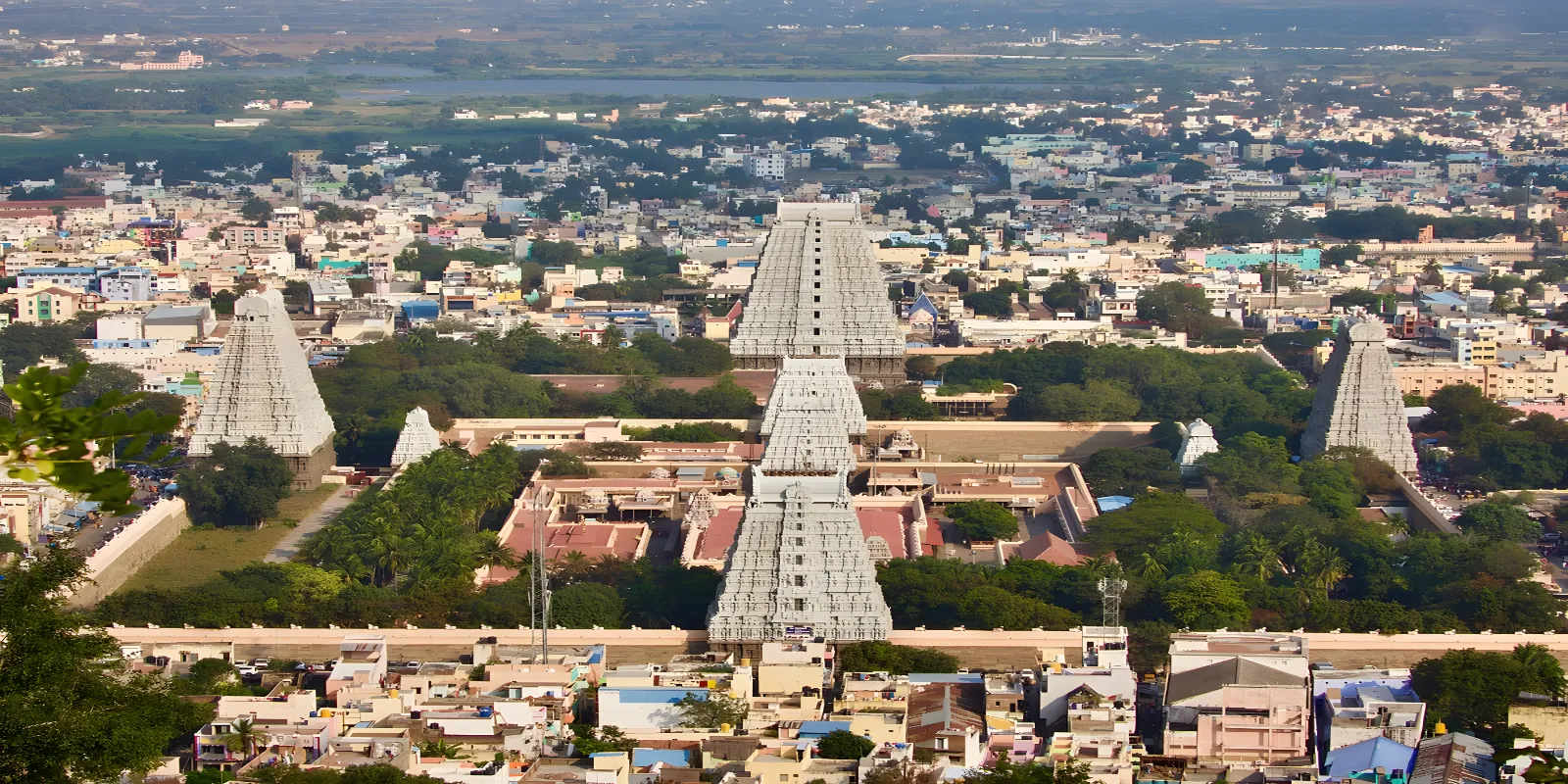Let’s hear the story or go on a journey to these five temples. Starting from Chennai, my first halt was at the Ekambareswarar Temple, located in the historic city of Kanchipuram in Tamil Nadu. A 2-hour journey from Chennai will take us to the temple. The temple depicting Earth represents the solid structure and the physical aspects of the world. With an area of 25 acres, this is one of the largest temples in India. A unique feature of this temple is the ancient mango tree in the courtyard which is believed to be over 3,500 years old. The four branches, of the mango tree produce different varieties of mango. The tall gopuram (gateway tower) that rises to a height of 59 meters is the highlight of this temple. The detailed carvings and the spectacular designs of the temple are examples of the Dravidian style of temple architecture. According to the legend, Parvati worshipped Shiva as Prithvi Lingam (a Lingam out of sand), under a mango tree. Vegavati river overflowed, threatening to immerse the Shiva Lingam. Parvati as Kamakshi embraced the Lingam. Moved by her act, Shiva appeared and married her. The Shiv lingam in the temple is made of mud or clay.
Moving from Kanchipuram our next halt is at Thiruvannamalai, Tamil Nadu. The temple we are visiting here, the Arunachaleswarar Temple stands for the Fire element. Purity, energy, and change are what fire represents. The temple is located at the foot of the Arunachala Hills. A significant part of this pilgrimage involves walking around this hill by devotees. It is renowned for the Karthigai Deepam festival, (festival of lights) where a huge clay lamp is lit atop the hill. This light can be seen from far away. The story behind this temple is that Goddess Parvati, in a playful manner, once closed the eyes of Lord Shiva. Although it was only for a moment, the earth was immersed in complete darkness for years. As a penance, Devi molded a Shivalingam out of the sand and started worshipping it. A demon tried to disturb her while she was in penance. Goddess Parvathi, in the form of Goddess Durga, killed the demon on a full moon day of the Tamil month of Karthigai. Lord Shiva appeared as a fiery flame on top of the Hill bringing light back to the world. He merged with Goddess Parvathy as Arthanareeswara, half female and half male. Lord Shiva is worshipped as the Agni lingam here. The temple complex has numerous halls and towers; among these, Rajagopuram is the tallest tower on the temple premises. The next temple on our list is the Jambukeswarar temple. It is situated at Thiruvanaikaval, near Trichy in the state of Tamil Nadu. The temple, built on an underground natural stream illustrates water. Water keeps dripping into the sanctum where the Shiva Lingam is placed to show that life never stops moving. This architectural wonder has five compounds and seven gopurams. Visitors find inner peace when visiting the temple due to its serene surroundings. The legend behind this temple is that Goddess Parvati mocked Lord Shiva during his penance. He was upset by her action, hence asked her to leave Kailasam and do penance on Earth. Goddess Parvathy undertakes rigorous penance in a forest of Jambu trees by creating a Shiv Lingam out of the water of the Cauvery River, known as the Jambukeswarar Lingam, symbolizing water. The name, Jambukeswarar, is derived from the Jambu tree forest where the lingam was formed.
Sri Kalahasteeswara Temple is the next on our journey located in Srikalahasti, Andhra Pradesh. A lamp burning inside constantly flickers within the inner sanctum even if there is no wind. This shows the significance of air or vayu lingam. This temple, constructed on a hillside is min-blowing. Consequently, the temple was named after Kannappa who gave his eyes to cover Shiva Lingam that had been bleeding. The unwavering devotion of Kannappa was later commemorated while several devotees strive to be like him too in their ways. Sri Kalahasteeswara temple reminds us about the importance of air in sustaining life as it emphasizes the unseen, but vital forces behind our existence on earth.
The last but not the least temple to be covered on this trip is Chidambaram, Tamil Nadu, Thillai Nataraja Temple, dedicated to Space as an element. The temple sanctum stands out as there is no idol of God but a space that signifies the element of space. Lord Shiva appears as Nataraja, the cosmic dancer here. The temple's sculptures and golden roof are very beautiful. The 108 dance poses of Lord Shiva carved on the temple's gopuram is the main highlight here It is believed that this temple is on the invisible point where “Chidambara Rahasyam” (the secret of Chidambaram) exists; this refers to the cosmic dance of creation and destruction. Being in the Thillai Nataraja Temple creates a platform for meditation and spiritual development just like how it represents the universe in its infinity without being restricted or limited by anything whatsoever within it.



